How to build solar power system for rural WIFI?
- Richard Wang
- February 3, 2025
- 4:46 pm
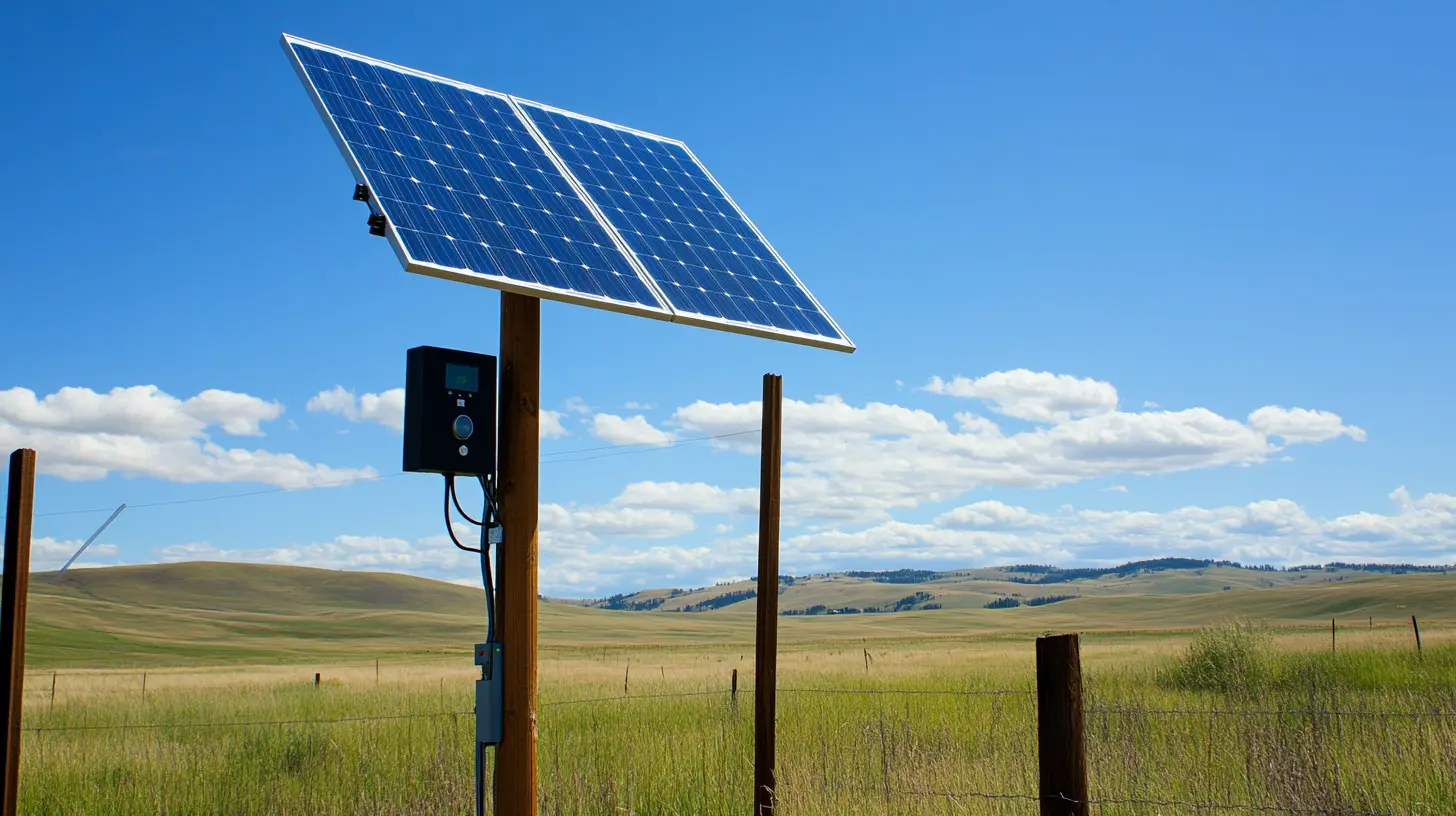
Preface
Rural WIFI is a wireless internet for rural areas solution and is often used in remote areas such as Africa and Latin America to provide broadband services to people there. It is generally built based on outdoor WIFI AP. However, the purchase, installation and debugging of outdoor WIFI AP is actually the simplest part of the whole solution. In fact, the power acquisition, backhaul network construction and other links behind it are the most important parts. Based on the actual situation in rural areas, it is often impossible to expect a city power supply. Generally, it is necessary to design a solar system based on the power demand of rural WIFI, and at the same time consider the design of the backhaul network. This article attempts to analyze the general establishment form of the site and the design method of the solar system for rural wifi with customers.
Table of Contents
1.General Topology of Rural WIFI Site
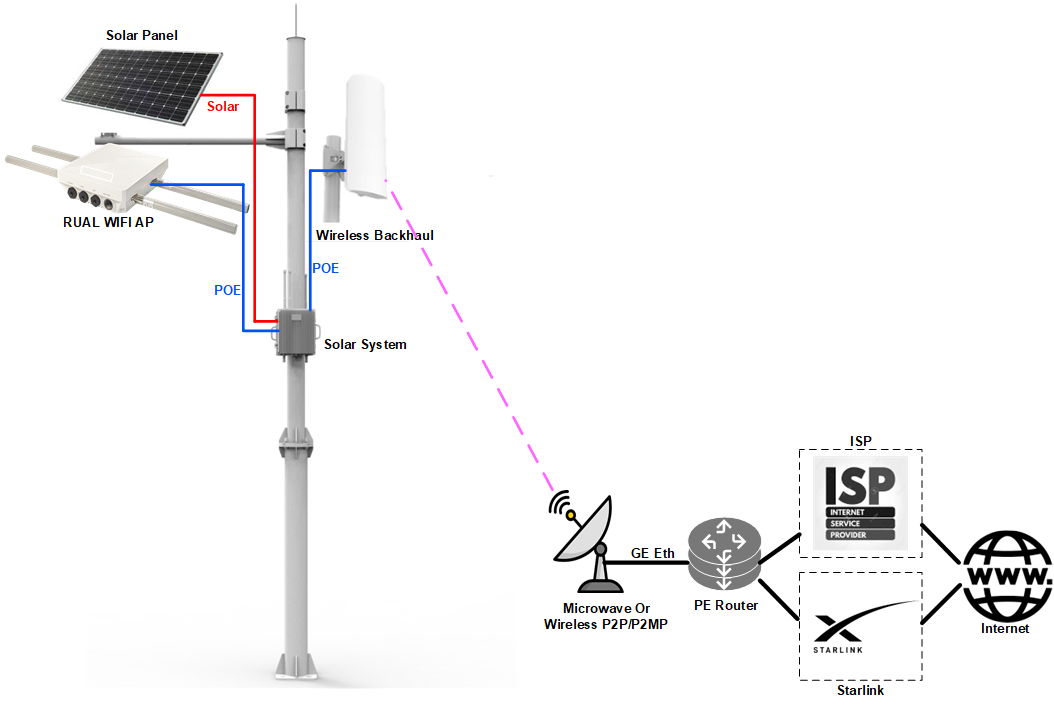
The above figure is a typical rural WIFI site topology. I can summarize it as follows:
- WIFI AP
Rural wifi sites are usually built outdoors to cover villages and towns in rural areas. Generally, the population density in such areas is very low, and a few outdoor WIFI APs can cover a village or town. And outdoor WIFI APs can cover the entire area more effectively when placed at a relatively high place.
- Wireless Backhaul
Rural WIFI sites generally have difficulty obtaining Internet backhaul, so they often need to build a wireless backhaul network to access distant ISP providers or directly use Starlink. Moreover, for example, the bandwidth of Starlink is generally 200Mbps. If all of it is used in one village, the overall cost is too high. Therefore, it is relatively more efficient to distribute it to rural wifi in several villages through wireless backhaul for coverage. It is only necessary to do bandwidth control and QOS configuration for the WIFI AP in each village.
- Solar System
Solar system for rural WIFI AP is the source of power for the entire system. Its design needs to be maintenance-free and highly reliable. In addition, Solar system for rural WIFI is also a natural aggregation node, which can be used as a node for traffic aggregation and backhaul of multiple WIFI APs.
- Pole
Rural WIFI and solar systems are usually installed high up on poles so that the WIFI AP signal can better cover villages and towns. At the same time, the solar system is also installed at a high location to better ensure the safety of the solar battery.
2.Overall Network Architecture of Rural WIFI
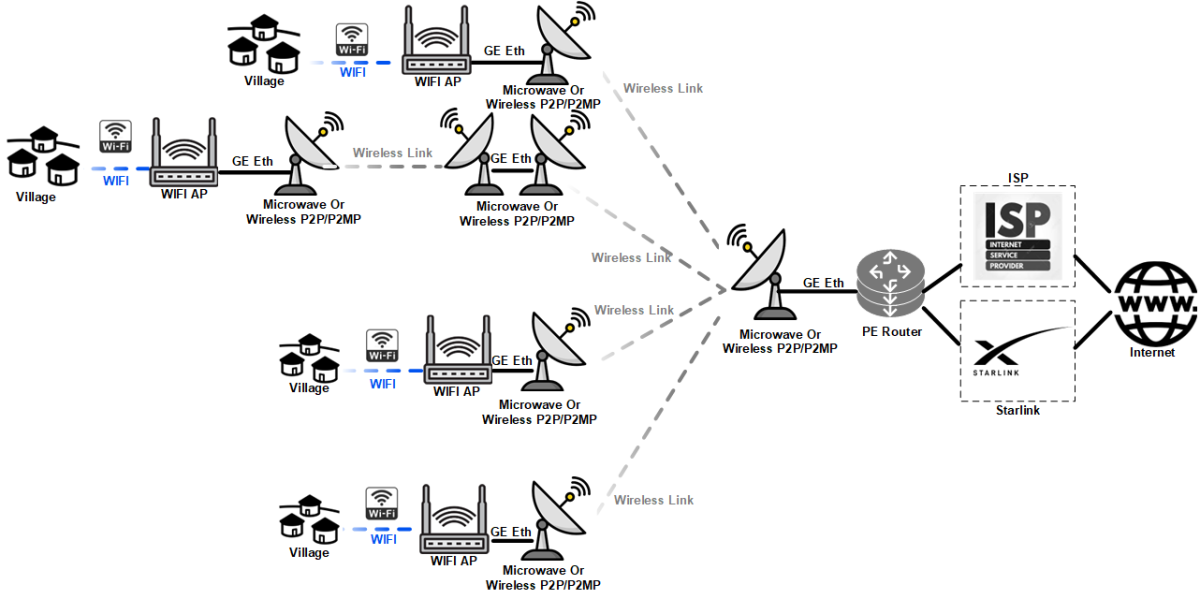
The above picture is an overall network architecture for rural WIFI. It can be seen that if the network architecture of the entire network is taken into account, it will be more complicated. The specific situation depends on whether you need to provide an ISP’s Internet service or Starlink service to different villages. This is a relatively common situation. Based on this network architecture, it will include the following parts:
Internet Exit in ISP and Central Office
This architecture usually builds a central office to deploy PE routers and Internet service providers. The best Internet service provider here is definitely a reliable local ISP or Telecom Carrier. However, in many underdeveloped areas, ISPs are not easy to obtain in remote areas. With the gradual expansion of Starlink services, using Starlink as an Internet service provider in rural areas is becoming an option for more and more projects.
Central Office to Distribution Node
There are many ways to implement network distribution, but based on the conditions of rural areas, microwave or P2P/P2MP wireless backhaul is generally used. At the same time, this method also reduces power consumption and makes it easier to use solar battery enclosure as the main means of power acquisition.
Intermedia Node
Based on the distance covered by the network, there are usually relay backhaul nodes. The architecture of these nodes is relatively simple, and usually microwave or wireless backhaul equipment is used to implement P2P or P2MP relay, thereby extending the distance covered by the network.
Access Node
Access nodes generally provide Internet services to users in villages or towns. Internet for rural areas does not require complex network services. We believe that if it is a new construction, using WIFI AP to provide low-cost and easy-to-access services to end users is the highest priority design consideration. Outdoor WIFI AP has become an inevitable option. For example, deploying outdoor WIFI AP in the center of a small village allows users to connect and obtain Internet services very conveniently.
Final User
End customers use their own smart phone, pad or computer to connect to the Internet via WIFI. Of course, considering that many rural areas in developing countries have no electricity supply, it is possible to provide low-cost micro-home solar energy storage equipment to end users, so that users can charge terminals such as smart phones.
In the entire network architecture, Access node and internet node are the places in the entire rural WIFI system that are most likely to need solar system power supply.
3.Ideal Rural WIFI solar system model
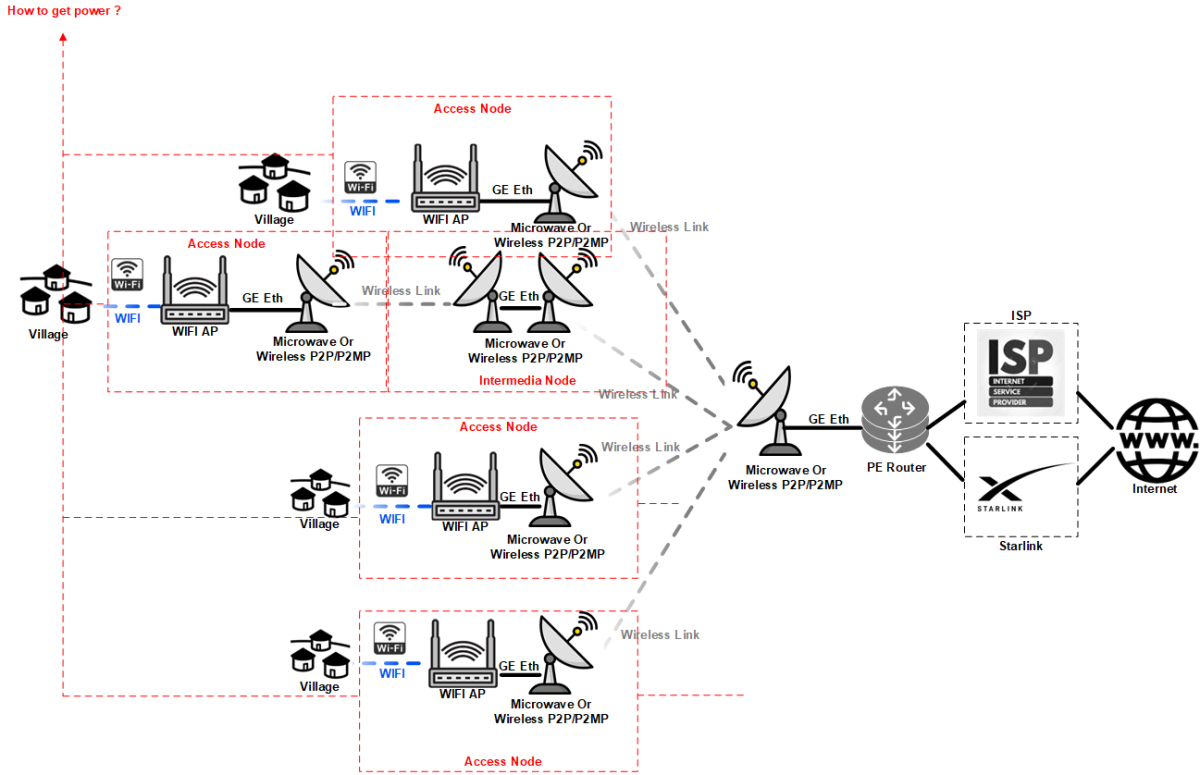
Building a solar power system for rural WIFI access nodes and intermedia nodes is not an easy task. The main challenges are as follows:
- Rural WIFI sites are located in remote areas and are usually on poles, which makes transportation and installation inconvenient
Because the sites are located in remote areas, the Rural WIFI solar power system cannot be too large or too heavy, otherwise it will be a huge obstacle to transport and install the equipment because the sites are located in remote areas. And because most sites are installed on poles. Imagine if the rural wifi solar system is too large, do we have to drive a crane to remote areas to perform the installation task? And if the solar system is too large, especially if the solar panel is too large, it will have a significant impact on the stability of the pole when there is strong wind, and even cause safety accidents.
- Difficult site installation and debugging
Installation and commissioning in remote areas is very difficult. Because the distance from the headquarters is too far, and since rural WIFI is required, general communication in this place is definitely not available. It will be difficult to get guidance from the headquarters for commissioning and installation. And if we look carefully at the topology mentioned in the first chapter, we can find that this solution looks simple but actually covers many aspects of power, network, infrastructure, and electricaltiy. This places high demands on the experience and skills of engineers. However, the labor cost of experienced senior engineers is usually very expensive, and the cost of the entire installation process will inevitably be much higher if they are sent to remote areas.
- Long-term impact of complex environment on equipment systems
- Compact Design for Easier Transportation and Installation
The system must be miniaturized and compact as much as possible. A suitcase-like design makes it easier to transport the equipment from HQ to the rural area. The lighter design will also make the rural WIFI solar system pole installation easier, without the need for heavy equipment such as cranes.
- All in One Pre-integrated System with network,Solar and Battery
Solar system for rural WIFI is best to be able to highly pre-integrate various systems such as network, solar, battery, etc., so as to avoid customers from complicated installation and debugging at the site. Customers do not need to care about the interconnection and power supply relationship between various modules. They only need to install the device on the pole and power it on to start running.
- IP65 rugged deisgn with rust-proof feature
The entire system is designed with IP65 ingress protection to prevent the network, solar controller, battery and other core components inside the device from contacting the outside air, thereby avoiding various corrosion possibilities and condensation problems. The entire solar battery enclosure is designed with rust-proof materials to prevent the outer shell from rusting.
- Remote monitoring and management
Rural WIFI solar system should have remote monitoring and management capabilities, so that the real-time status of the site operation can be known on the central software platform to help customers better operate and maintain. When a site problem occurs, the problem can be roughly known so that spare parts can be brought to the site to avoid multiple trips between the site and HQ.
4.Functional model of Rural WIFI solar system

At the beginning of this article, we gave a simplified model of rural WIFI. Based on this simplified model, we can further abstract the functional units that a rural WIFI solar power system needs to have as follows:
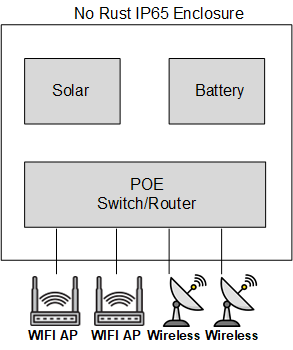
- POE/POE+/POE++
We can find that most rural WIFI APs are powered by POE. Of course, different types of WIFI APs and wireless backhaul devices have different POE standards. So we think that solar power for rural WIFI AP should have three POE standards: 80.3af, 802.3at, and 802.3bt, so that it has better scene adaptability.
- Rugged Design with IP65 Ingress Protection
This feature has been explained in the previous chapter and will not be elaborated here.
- Solar System
Rural WIFI AP scenarios do not require a lot of power. Assuming that a site has 2 WIFI APs and 1 wireless backhaul device, the power consumption will generally not exceed 100W, and in most cases it is basically below 50W. Therefore, a solar controller with a power of about 500W can generally meet the demand, and it should not be configured with an overly large solar controller to increase the difficulty of deployment.
- Battery
We believe that the battery in Rural WIFI scenarios should avoid using lead-acid batteries as much as possible. This is because lead-acid batteries have low energy density, are heavier and larger overall, and will make the entire system more difficult to transport and install. We believe that high-energy-density lithium batteries should be used to make the entire system smaller and lighter.
4.Rural WIFI Solar System's timer switch helps use energy more efficiently
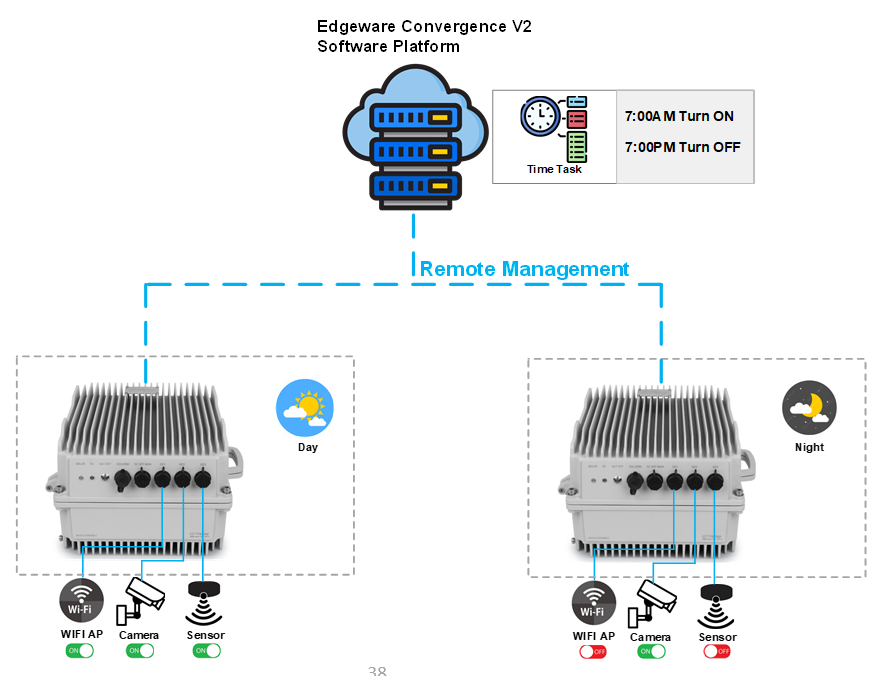
The battery part of the solar power system supporting Rural Wifi is a relatively large investment in the entire system. However, if we consider the use of batteries, we will find that the batteries are used at night most of the time, and they are often powered by solar energy during the day. However, based on the scenario of rural Wifi, we will find that no one actually uses it after 12 o’clock at night to the next morning. So if we can control the WIFI AP and Wireless Backhaul link devices, turn them off after 12 o’clock at night and turn them on after 8 o’clock in the morning, then we can use the battery power more effectively, which also means that less battery capacity can be configured. This further helps to miniaturize and lighten the entire system.
5.Edgeware All in One Rural WIFI Solar Power System Edge Span S60
Edgeware’s Edge Span S60 series is an all in one IP65 solar battery enclosure designed for rural WIFI. This series takes into account the challenges of rural area deployment and implements the following key features:
- All in One
As we have described in the previous article, the basic model of the rural WIFI solar system, Edge Span S60 integrates all functions of solar controller, battery, POE switch/router, monitoring and management into one system. Customers no longer need to integrate and connect various components during installation, which greatly simplifies site installation.
- IP65 and rust proof provide strong rugged design for environmental adaptability
The entire system has IP65 protection capabilities and the rust-proof capabilities of the entire system built on cast aluminum make the Edge Span S60 series completely fearless of environmental challenges.
- Customized based on customer scenarios
We will carry out customized design and configuration based on the actual network and energy needs of the customer’s scenario, so as to optimize the cost of the customer’s actual site deployment and achieve the goal of profitable rural area Internet deployment.
- Complete remote management and monitoring software platform to reduce daily OPEX
The Edge Span S60 series has comprehensive remote monitoring and management capabilities, which can better help customers reduce site operation and maintenance OPEX after deployment.
Edge Span S60 has a large number of customized models. If you have detailed needs, please contact our sales staff. The following introduces two typical models of Edge Span S60 series.
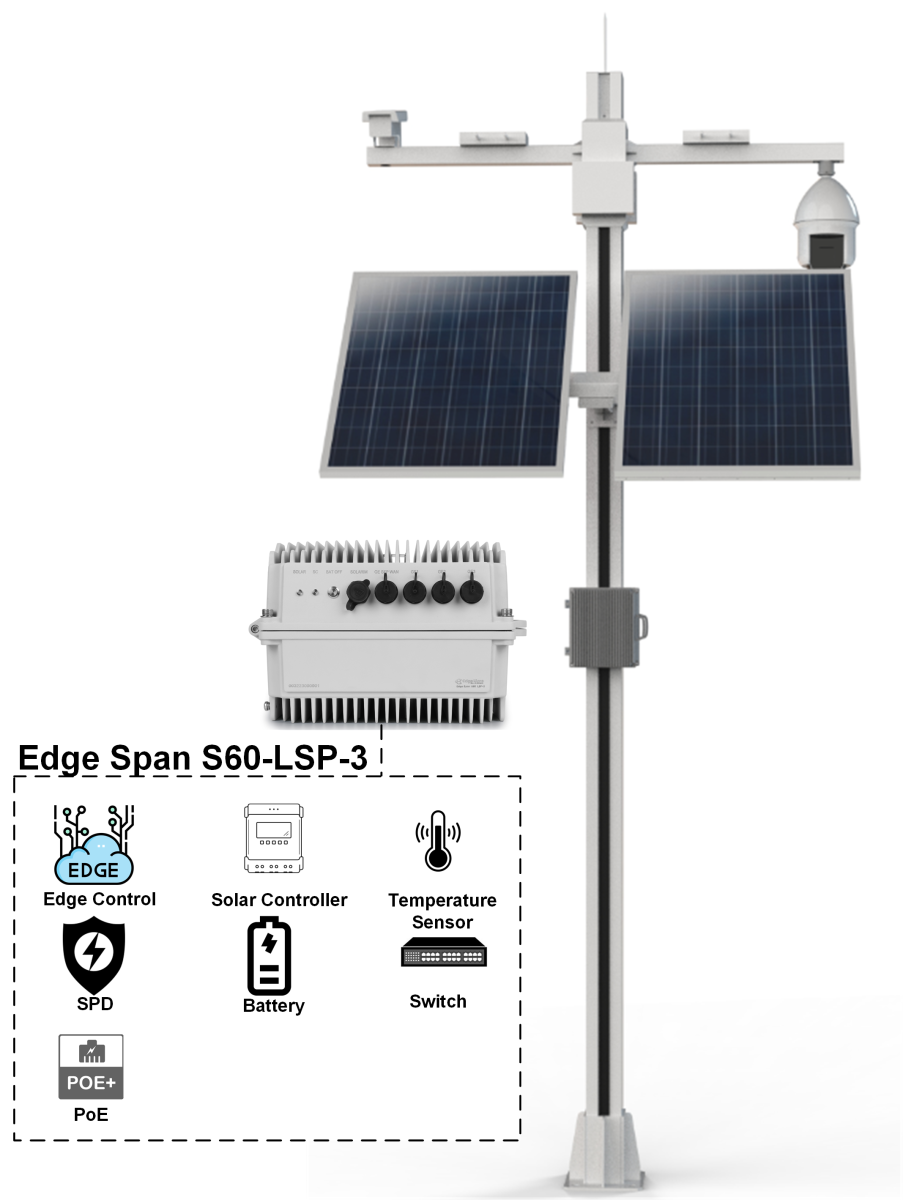
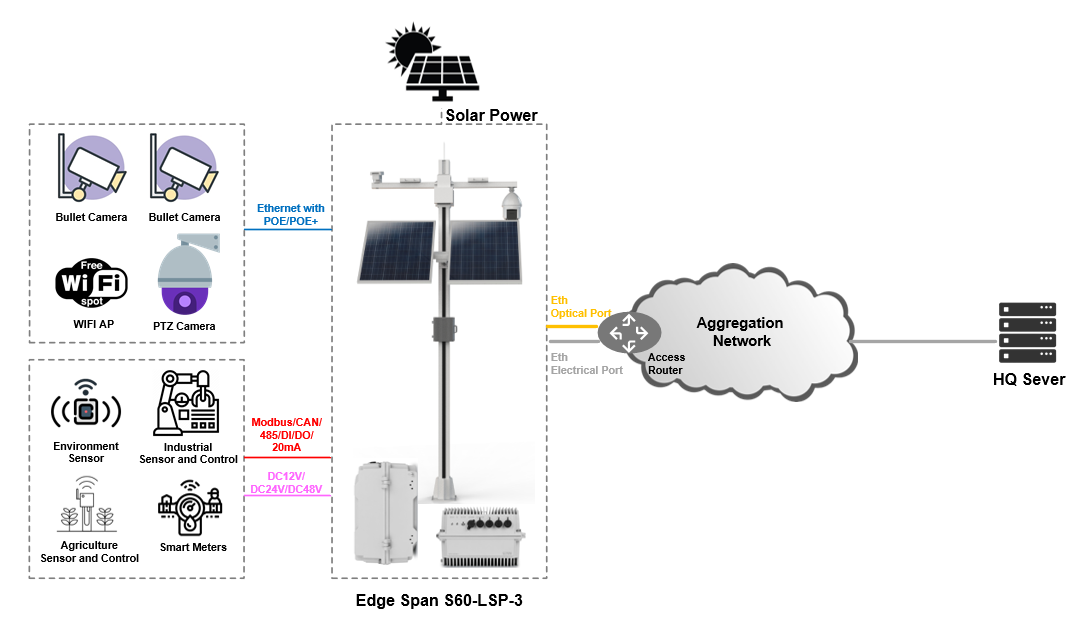
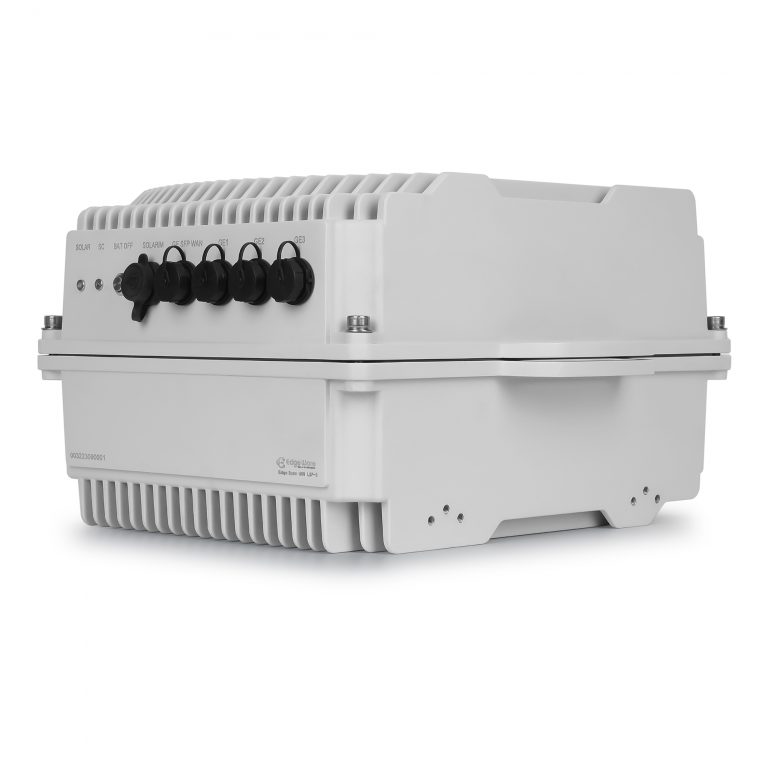
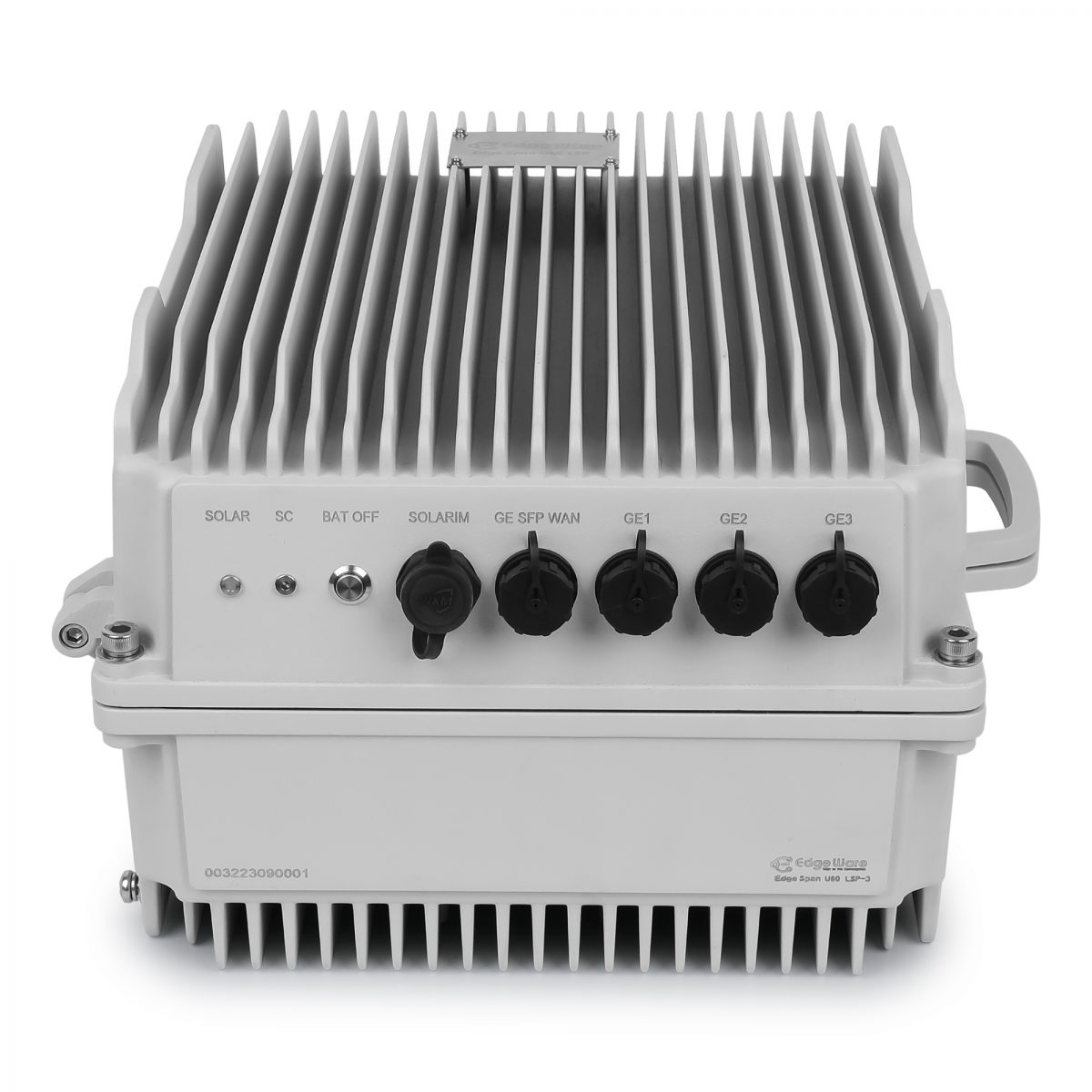
Edge Span S60 LSP-3 solar system for rural WIFI is a solar power based outdoor maintenance-free all-in-one enclosure that integrates communications, solar power, lightning protection, and POE switch. The product is specially optimized according to the pain points of rural WIFI outdoor deployment to achieve the following main functions:
- Industrial grade layer2 POE+/POE++ switch(2 Ports 802.3at 30W, 1 Ports 802.3bt 110W)
- Industrial grade 500W MPPT solar controller
- 48V55Ah lithium battery(48-72 hours system autonomy based on different load configuration)
- Software system for remote management and monitoring
- Solar Statistics
- Surge protection design
- Full aluminum IP65 enclosure for whole system natural heat dissipation ability.
Edge Span S60-LSP-3
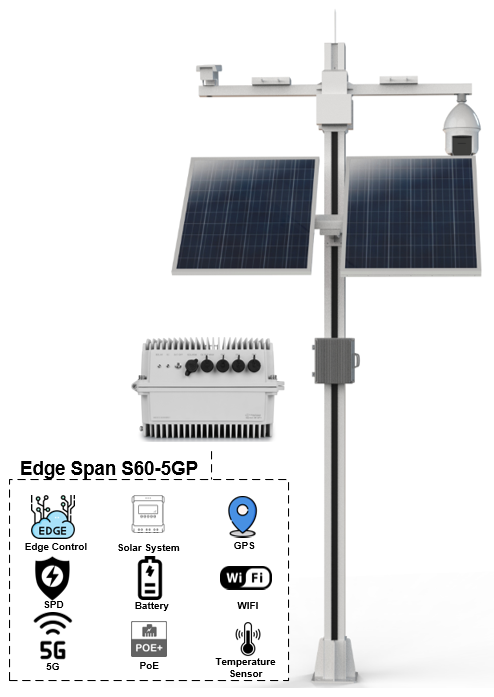
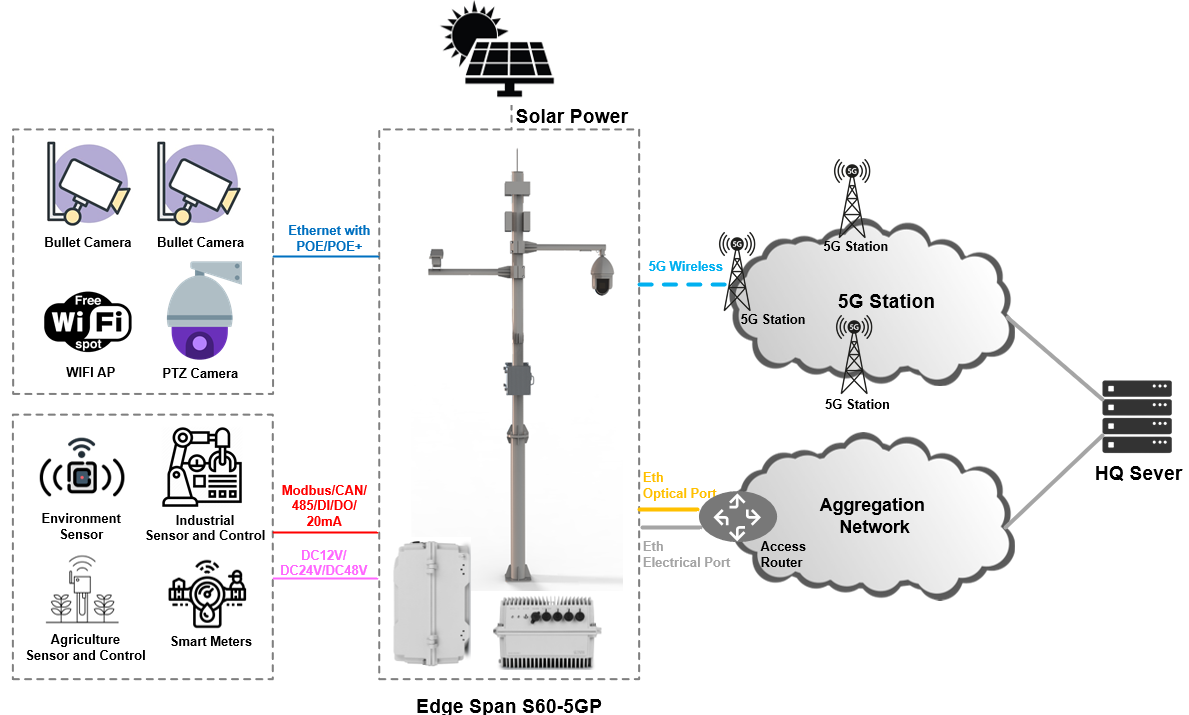
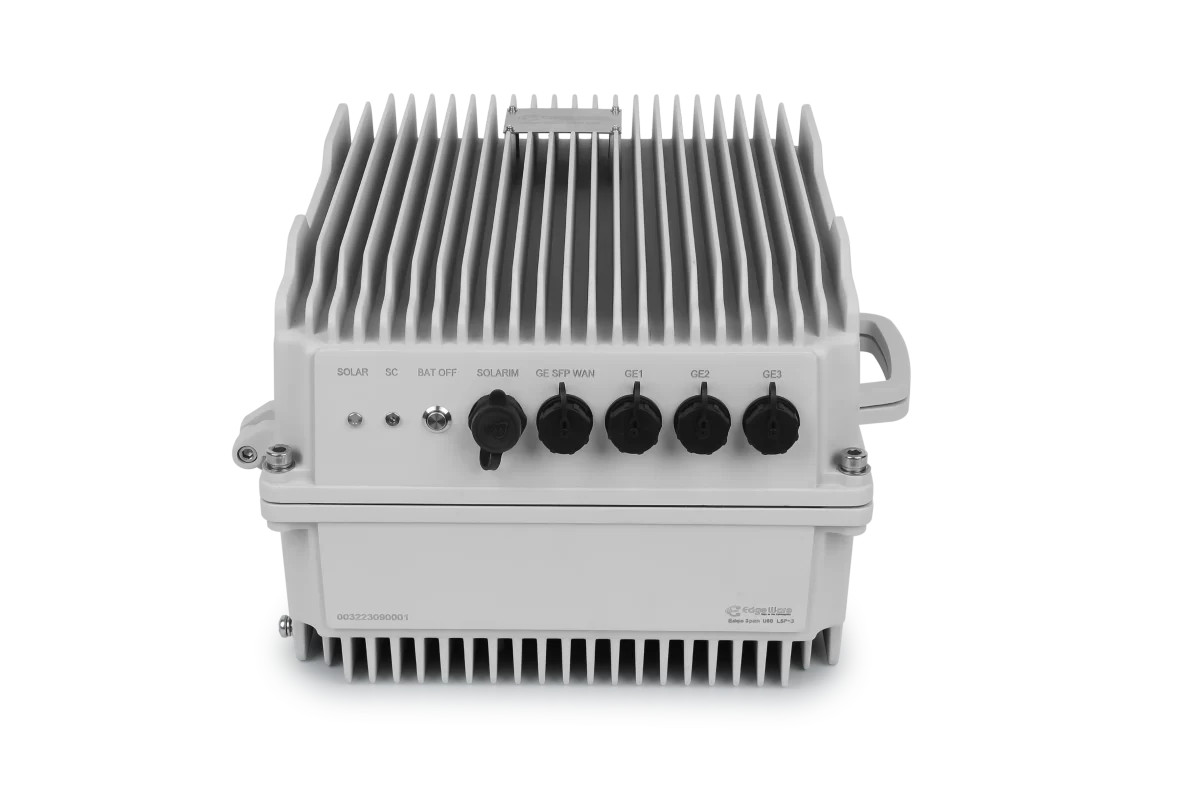
- IP65/NEMA4 Waterproof
- W*H*D 295mm*355mm*214mm
- 22kg
- Aluminum Cast Enclosure Rust-Proof
- Operating Temperature:-20~+55°C
- Working Humidity:5%~90%
- Power Surge Protection:20Ka
- Worldwide 5G/4G Band Supported
- WIFI Optional
- GPS Optional
- RS485/RS232/DI/DO Optional
- Industrial 5G/4G POE Router Module Embedded
- 1*1000Base-X/1000Base-T Combo WAN Port
- 4*1000Base-T LAN Ports
- 3 LAN Ports 802.3at POE+ ( Can configure 802.3bt POE++ one port as requested)
- 500W MPPT Solar Controller
- 2640Wh Lithium Battery(48V55AH)
- Thingsboard Support Optional
- Node-Red Optional
Edge Span S60-5GP

